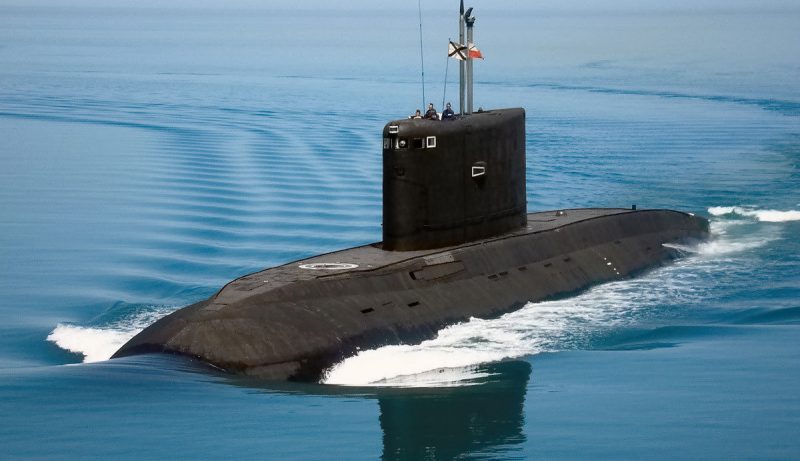Russia began combat operations in Syria in October of 2015. This has become one of the priorities of their navy. The investment in constructing ships, bases, and infrastructure is unprecedented.
Even before Syria, Russia knew it needed to modernize its fleet after allowing it to stagnate since the collapse of the Soviet Union. They invested 5 trillion rubles ($78 billion) in ships and submarines in 2011-2012.
Currently, Russia is working on six frigates from the Admiral Grigororovich 11356 project. The third vessel is nearly ready for the navy to take delivery. They’ve built three Varshavyanka diesel-electric submarines from the 636.3 project. These are outfitted with the new Caliber-PL missiles that can hit targets up to 1,500 miles away.
Igor Kasatonov, the former Deputy Commander-in-Chief of the Russian Navy and former commander of the Black Sea Fleet, said: “The capacities of the new submarines were first demonstrated at the end of last year when the Rostov-on-Don submarine used its Calibers to destroy several terrorist facilities in Syria.”
“Six more submarines will be built for the Pacific Ocean Fleet,” said Kasatonov. “The industry is also building a series of strategic missile submarine cruisers from the 955 Borei project,” he added. Three of the subs have already been received by the navy, and another five will be received by 2020.
The Russian Defense Ministry is focusing resources on the modernization of submarine bases in the Far East, specifically in Vilyuchinsk in the Kamchatka region and Novorossiysk on the coast of the Black Sea. Four subs from the 995 Borei project will be sent to each base.
There are three Varshavyanka 636.6 diesel subs with Caliber missiles on alert currently in Novorossiysk. Within three years the base will receive the other three subs from the series after the base modernization is complete.
Russia had learned from the mistakes the Soviets made in the late 70s and early 80s when they received large Krechet aircraft carriers from the 1143 project but had no infrastructure in place to service them. The ships were permanently docked – using their diesel engines to produce electricity, burning up their resources, and causing them to be written off early. This time, an infrastructure is created for each ship and sub.
“Today the navy needs large helicopter carriers since they transport military cargo and aviation groups to areas of combat operations. Currently, for Russia this is Syria,” explained Dmitry Safonov, a military observer, at the Izvestiya newspaper.
He feels that one helicopter carrier can replace an entire airbase. “Russia is now working on a project to build Priboi large helicopter carriers. It will be completed in 2025 along with the Leader nuclear destroyer and the new Shtorm aircraft carriers, the project for which was presented to the world in mid-2015.”
There is only one current Russian military base outside of the former Soviet Union – the one in Syria.
The main problem the Russian fleet faces is the lack of engines and replacement parts previously produced by Ukrainian factories. This includes a contract with the Zorya-Mashproekt company which had previously agreed to provide six turbines for patrol boats in the 11356 project.
Viktor Murakhovsky, the editor-in-chief of the military magazine Arsenal Otechestva said: “Russia had received only three of the six engines before the crisis in relations with Ukraine, and as a result, three of the ships from the 11356 project will be “inactive” until 2018 when Russia will set up its own production of these engines.”
Murakhovsky said that the repair of Soviet heritage ships and the modernization of those ships is a big issue for Russia. They have a large number of missile cruisers and destroyers from the Soviet era. Many of them are no longer able to perform in combat missions, but they have not been removed from the fleet.
To repair the older ships, Russia needs to invest heavily in new factories and expand old factories. This will require long-term work and significant financial investment.
